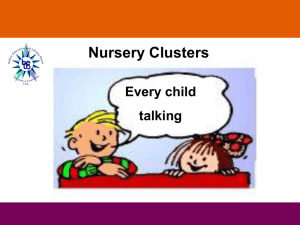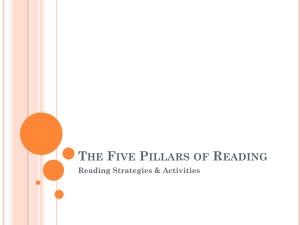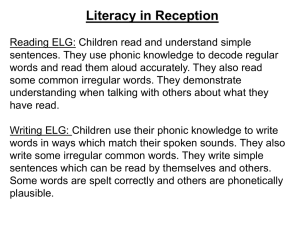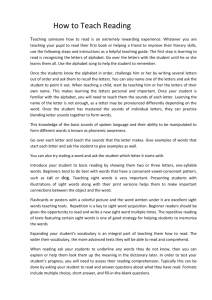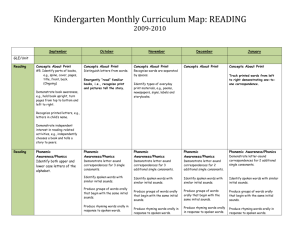File Reading_Terminology
advertisement
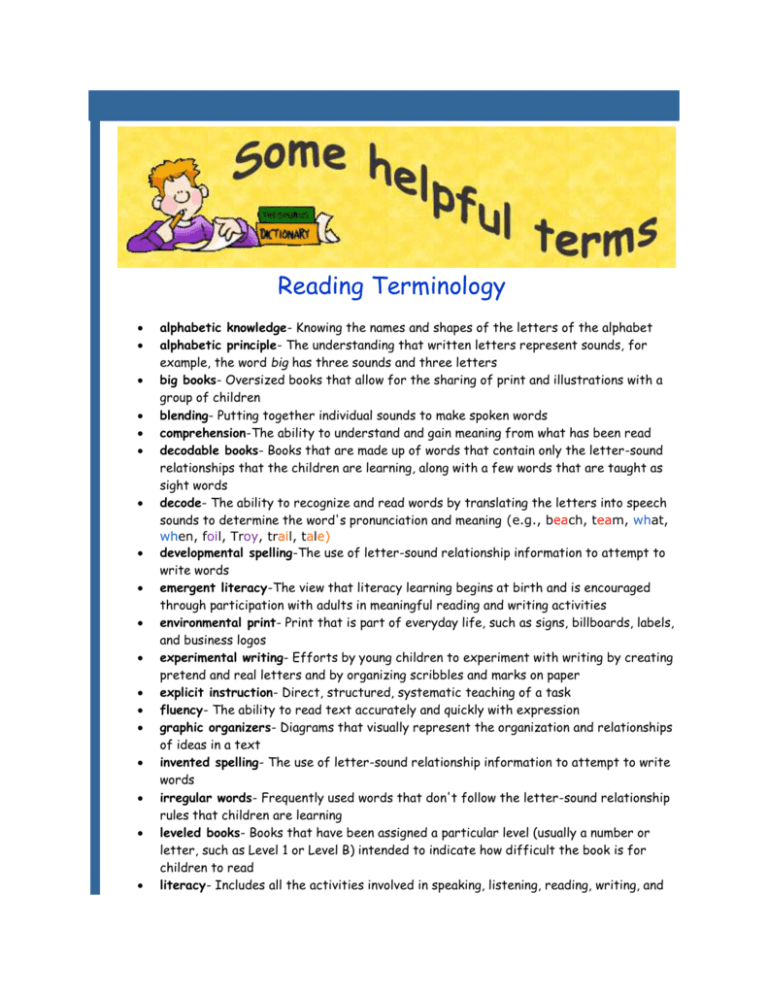
Reading Terminology alphabetic knowledge- Knowing the names and shapes of the letters of the alphabet alphabetic principle- The understanding that written letters represent sounds, for example, the word big has three sounds and three letters big books- Oversized books that allow for the sharing of print and illustrations with a group of children blending- Putting together individual sounds to make spoken words comprehension-The ability to understand and gain meaning from what has been read decodable books- Books that are made up of words that contain only the letter-sound relationships that the children are learning, along with a few words that are taught as sight words decode- The ability to recognize and read words by translating the letters into speech sounds to determine the word's pronunciation and meaning (e.g., beach, team, what, when, foil, Troy, trail, tale) developmental spelling-The use of letter-sound relationship information to attempt to write words emergent literacy-The view that literacy learning begins at birth and is encouraged through participation with adults in meaningful reading and writing activities environmental print- Print that is part of everyday life, such as signs, billboards, labels, and business logos experimental writing- Efforts by young children to experiment with writing by creating pretend and real letters and by organizing scribbles and marks on paper explicit instruction- Direct, structured, systematic teaching of a task fluency- The ability to read text accurately and quickly with expression graphic organizers- Diagrams that visually represent the organization and relationships of ideas in a text invented spelling- The use of letter-sound relationship information to attempt to write words irregular words- Frequently used words that don't follow the letter-sound relationship rules that children are learning leveled books- Books that have been assigned a particular level (usually a number or letter, such as Level 1 or Level B) intended to indicate how difficult the book is for children to read literacy- Includes all the activities involved in speaking, listening, reading, writing, and appreciating both spoken and written language 3 3 phonemes- The smallest parts of spoken language that combine to form words - For example, the word hit is made up of three phonemes (/h/ /i/ /t/) and differs by one phoneme from the words pit, hip, hot. phonemic awareness- The ability to hear and identify the individual sounds in spoken words phonics- The relationship between the sounds of spoken words and the individual letters or groups of letters that represent those sounds in written words phonological awareness- The understanding that spoken language is made up of individual and separate sounds - Phonological awareness activities can involve work with rhymes, words, sentences, syllables, and phonemes. predictable books- Books that have repeated words or sentences, rhymes, or other patterns prefix- A word part such as re-, un-, pre- that is added to the beginning of a root word to form a new word with a new meaning pretend reading- Children's attempts to "read" a book before they have learned to read - Usually children pretend read a familiar book that they have practically memorized. print awareness- Knowing about print and books and how they are used root word- A word or word part to which a prefix or suffix is added segmentation- Taking spoken words apart sound by sound sight words- Words that a reader recognizes without having to sound them out Some sight words are "irregular," or have letter-sound relationships that are uncommon. Some examples of sight words are you, are, have, and said. suffix- A word part such as -ness, -able, or -er that is added to the end of a root word to form a new word with a new meaning syllable- A word part that contains a vowel or, in spoken language, a vowel sound (event, news-pa-per, pret-ty) vocabulary- The words we must know in order to communicate effectively - Oral vocabulary refers to words that we use in speaking or recognize in listening. Reading vocabulary refers to words we recognize or use in print. word walls- Word-study and vocabulary words that are posted on the classroom wall so all children can easily see them - Usually, word walls are arranged alphabetically, with words starting with a certain letter listed under that letter for easy location. word recognition- The ability to identify printed words and to translate them into their corresponding sounds quickly and accurately so as to figure out their meanings


